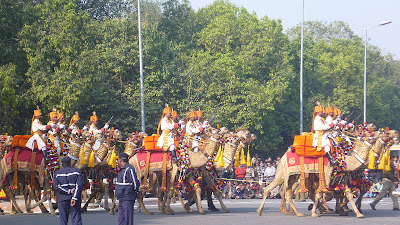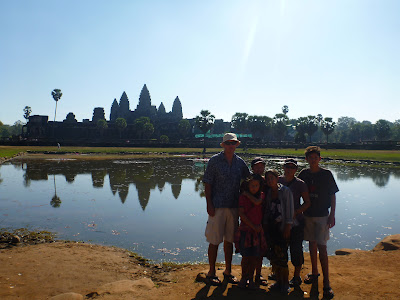 |
| Us in the blue mosque. You can see all the little half domes supporting the big dome. |
The Taj Mahal and the Blue Mosque are pretty comparable in their structure, interior decoration, and Muslim influence. The purposes are totally different though because one is a mosque and the other a tomb. The emperors who built them also had different reasons. The Shah Jahan built the Taj for his wife and Justinian made the blue mosque as part of the ongoing contest all of the Ottoman rulers took part in. Pretty much he wanted to make a nicer mosque than the mosque built by his dad. The blue mosque was made to be better than the Hagia Sophia. Despite their different purposes the Taj Mahal and the blue mosque are also similar.
 |
| Stone cut out railing thing. |
The blue mosque and the Taj Mahal are a bit similar in terms of structure. They both have multiple domes, though they are of different shapes. The Blue Mosque’s domes are way rounder than the Taj Mahal’s. The blue mosque’s extra domes also serve more of a purpose. The outer half domes are buttresses to the big middle one. In both buildings there are fake domes on the inside of the domes. The blue mosque has four ginormous columns and extra thick walls to help support the big dome in the middle and it is symmetrical on two lines. This is a little bit similar to the Taj’s symmetry, though that is more for looks than structure. Also, both buildings are made out of marble—one Italian and the other Indian marble. The marble in the mosque is much greyer than that in the Taj though.
 |
| There are verses from the Koran writin in Arabic around the doorway. |
The Taj and the mosque are also similar on the inside. There are lots of intricate and colorful designs on the walls and interior dome in both buildings. The materials for the designs are way different, though (inlayed stones vs paint and tile). Also, the Taj is much less busy compared to the blue mosque. There is actually blank wall space in the Taj Mahal while the mosque has paintings, tiles, stained glass, and designs covering almost every inch of the interior. Both buildings have stone cutout things either in the form of a cage around the tombs or railings, too.
 |
| Busy but pretty stained glass. |
There is heavy Muslim influence on both buildings. The blue mosque is obviously very Muslim and there are excerpts from the Koran on the walls everywhere. The Taj Mahal’s Muslim influence is the two identical mosques it has on either side and more excerpts from the Koran above the entrance to the tomb and on the walls. The king who built the Taj Mahal was a Mughal emperor and the Mughals were one of the big Muslim powers that came into India way back when. Also, both buildings were built around the 16th century.
The Taj Mahal and the Blue Mosque are very similar in some ways and very different in others. The decoration, religious influence, and structure are comparable while the purpose and overall effect and appearance are quite different. The Taj looks very clean, white and simple which the mosque’s grey marble and busy decoration makes it look older and quite overwhelming.



































